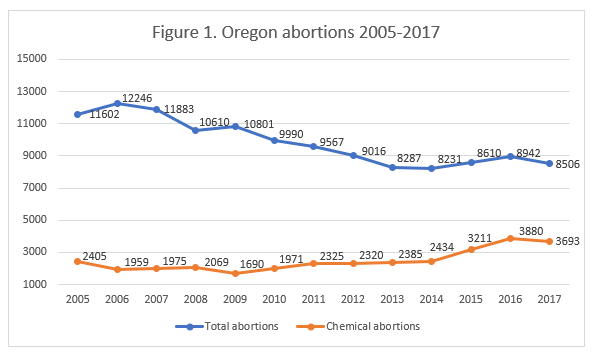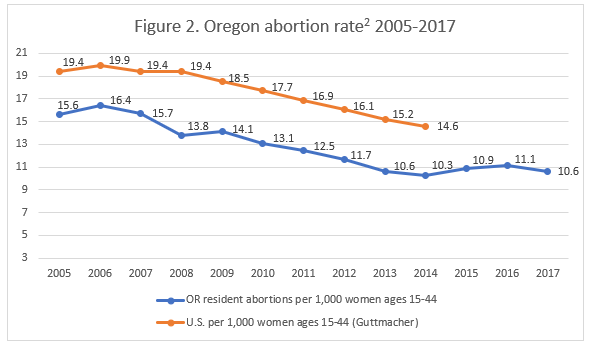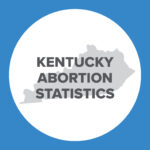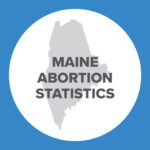Abortion Reporting: Oregon (2017)
Oregon has released abortion totals for 2018 through 2020, but the full reports are not yet available. Oregon is in the process of migrating its health statistics data to a new platform.
Oregon’s abortion statistics for 2017 were published in September 2018 on the website of the Oregon Health Authority. During 2017, reported abortions in the state declined after increases in 2015 and 2016.
Changes in Oregon Abortions, 2016-2017

Abortion Totals and Trends
A total of 8,506 abortions were reported in Oregon in 2017, a decrease of five percent from 2016 (Fig. 1). Abortions have fallen by 46 percent from 1980, the year Oregon’s abortion reporting system took effect. There were 3,693 chemical abortions in 2017, a drop of five percent from 2016. However, chemical abortions have increased by 369 percent since 2001, the first year after the Food and Drug Administration approved the use of Mifeprex, the most common abortion drug. The resident abortion rate decreased slightly from 11.1 abortions per 1,000 resident women in 2016 to 10.6 in 2017 (Fig. 2).
State Report Summary
Ninety percent of the abortions reported in Oregon were performed on state residents. Ten percent of the abortions were performed on females age 19 or younger, including 15 girls under the age of 15. Fifty-six percent were performed on women in their twenties, dropping to 30 percent on women in their thirties and four percent on women age 40 or older.
Oregon reports abortions by race, but because more than one race may be selected on the abortion reporting form, the figures for each race do not add up to one hundred percent. Seventy-nine percent of abortions were performed on white women, and seven percent were on African American women, although some of the women may have been of multiple races. Overall, Oregon’s population of women of childbearing age is predominantly white – white women make up 87 percent and African American women make up only three percent.
Twenty percent of the abortions reported in Oregon were performed on women who were married, separated, or in a domestic partnership. Seventy-four percent were performed on women not married, and for six percent marital status was unknown. Forty-nine percent had no living children. Twenty-two percent had one child, and 28 percent had two or more. A majority of abortions were performed on women who had never had an abortion before; 63 percent had had no previous abortions. Twenty-two percent had one prior abortion, and 15 percent had more than one.
A third of the abortions occurring in Oregon were performed on women who reported using contraception at the time they became pregnant. Sixty-four percent of the abortions were performed on women who were not using any contraception when they became pregnant and four percent were performed on women who did not report whether or not they used contraception. Of the women using contraception, 933 reported using pills, 1,065 used condoms, and 821 used another form of contraception; women could report using more than one method.
Eighty-eight percent of reported abortions were performed in the first trimester. Seventy-one percent occurred earlier than nine weeks of gestation, and 17 percent were performed between nine and 12 weeks. Six percent were performed between 13 and 16 weeks and three percent between 17 and 20 weeks. Eighty-four abortions were performed between 21 and 22 weeks of gestation – more than halfway through pregnancy, when babies can feel pain. Eighty-seven abortions occurred at 23 weeks of gestation or later. Gestational age was not reported for 47 abortions. Like seven other states and the District of Columbia, Oregon has no limits on how late in pregnancy an abortion may be performed.
Abortion-Related Complications
In 2017, abortions at later gestational ages had the highest rates of reported complications. Of the abortions performed at eight weeks of gestation or earlier, 4.1 percent resulted in complications. Abortions performed between nine and 12 weeks resulted in complications 2.9 percent of the time. This dropped to 1.6 percent at 13 to 16 weeks and 1.4 percent at 17 to 20 weeks. However, 4.8 percent of the abortions performed between 21 and 22 weeks of gestation led to complications. This increased to 5.7 percent for abortions at 23 weeks or later. These trends correspond with findings that the risk of complications increases with gestational age and that chemical abortions have a much higher rate of complications than do surgical abortions. Fifty-six percent of the abortions performed at eight weeks or earlier were chemical abortions, compared to 16 percent between nine and 12 weeks.
The most frequent type of complication was retained products, occurring 91 times. Failure of first method was the second-most common complication, occurring 50 times. There were five cases of hemorrhage, five of infection, and one uterine perforation. Thirty-five women had multiple complications, and 125 had other, unspecified complications.
State Ranking
Oregon’s abortion reports tied for 13th place in a 2016 Charlotte Lozier Institute study of abortion reporting that ranked the 50 states, the District of Columbia, and New York City. Oregon could be more transparent in its reporting, including data it already collects, such as the facilities where abortions take place and previous miscarriages experienced by women who undergo abortions. Oregon could also collect and report information on the methods of payment used to fund abortion, as well as women’s reasons for choosing abortion. Oregon could report whether any women die as the result of an abortion—as Oregon’s complication statistics illustrate, abortions become more dangerous as gestational age progresses, and Oregon permits abortion throughout all nine months of pregnancy.


- Statistics on abortion complications reported here represent a minimal number of deaths and complications, as this data is collected in a non-systematic and non-verifiable way. As such, this data cannot be used to calculate either an accurate abortion mortality rate, nor an accurate abortion complication rate for the state.
- Oregon’s abortion rate is calculated using the following formula: (all abortions performed on women ages 15-44 and women of unknown age ÷ resident women ages 15-44) x 1,000.






















